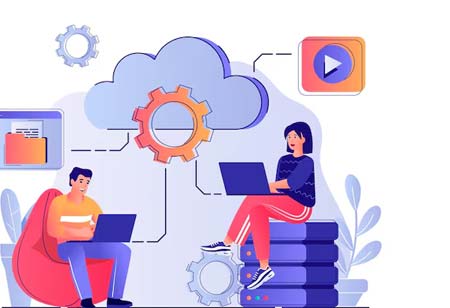THANK YOU FOR SUBSCRIBING
Be first to read the latest tech news, Industry Leader's Insights, and CIO interviews of medium and large enterprises exclusively from Hrtech Outlook
THANK YOU FOR SUBSCRIBING

By
HR Tech Outlook | Friday, October 24, 2025
Stay ahead of the industry with exclusive feature stories on the top companies, expert insights and the latest news delivered straight to your inbox. Subscribe today.
Fremont, CA: The integration of advanced technologies into workforce management has the potential to revolutionize how organizations operate. The shift presents several challenges that can hinder successful implementation. Identifying the hurdles is crucial for businesses seeking to optimize their workforce processes and leverage the full benefits of modern technology.
One of the most significant hurdles in adopting advanced technologies in workforce management is employee resistance to change. People are often accustomed to traditional working methods, making embracing new tools and processes difficult. This resistance can stem from various factors, including fear of the unknown, concerns about job displacement, or a lack of familiarity with new systems.
To mitigate resistance, organizations must actively engage employees throughout the implementation process. This involves communicating the benefits of the new technologies, providing comprehensive training sessions, and involving staff in decision-making where possible. By fostering a culture of collaboration and continuous learning, organizations can help ease the transition and build enthusiastic support for technological changes.
Integration with Existing Systems
Another significant challenge comes from integrating new technologies with existing systems and processes. Many organizations rely on legacy systems that may not be compatible with the latest advancements in workforce management, such as AI, automation, or advanced analytics. This can create technical bottlenecks and lead to disruptions in workflow, ultimately impacting productivity and efficiency. To address this challenge, businesses must conduct thorough compatibility assessments before implementing new technologies.
This involves evaluating existing systems, identifying gaps, and considering the overall architecture of the organization's IT infrastructure. In some cases, it may also be essential to phase out outdated systems in favor of more modern solutions that can seamlessly integrate with advanced technologies. Strategic planning and change management investment are key to a smooth transition.
Data Privacy and Security Concerns
With the adoption of advanced technologies comes heightened concerns regarding data privacy and security. Workforce management tools often rely on sensitive employee data, including personal information, performance metrics, and payroll details. Organizations must prioritize safeguarding this data against unauthorized access and breaches, as mishandling such information can lead to severe legal and reputational repercussions.
Companies should invest in strong cybersecurity measures specifically designed for workforce management technologies. This could involve implementing encryption protocols, conducting regular security audits, and ensuring compliance with relevant regulations. Promoting a culture of data responsibility among employees can strengthen security practices and reduce the risk of data breaches.



